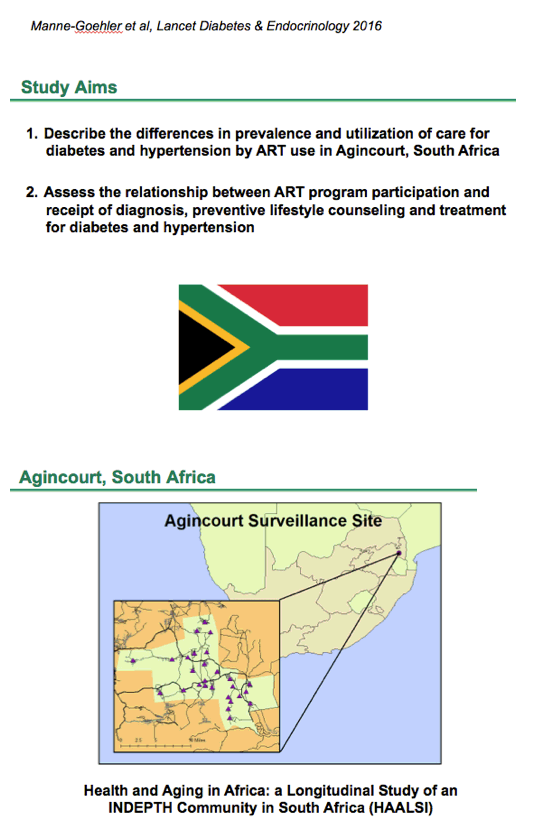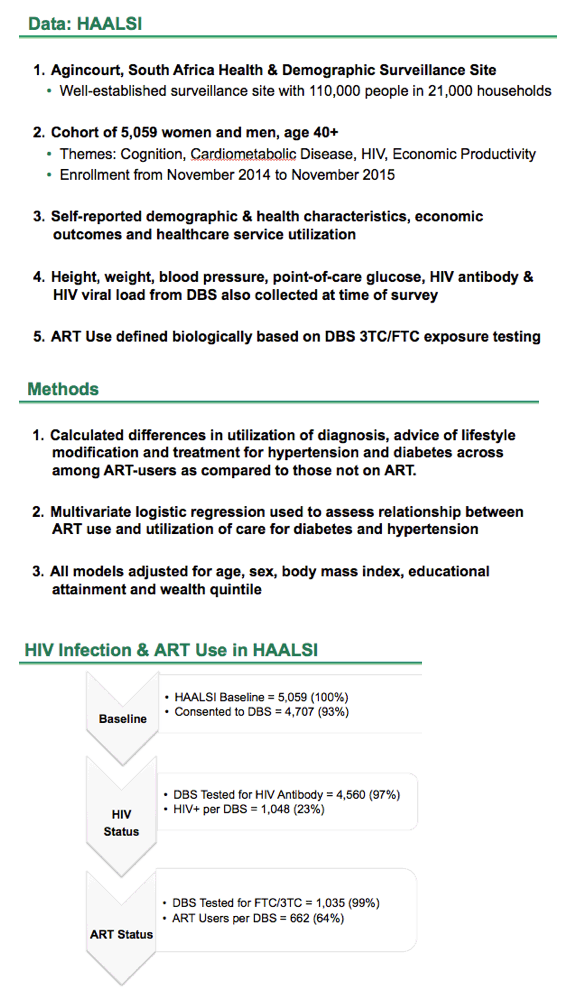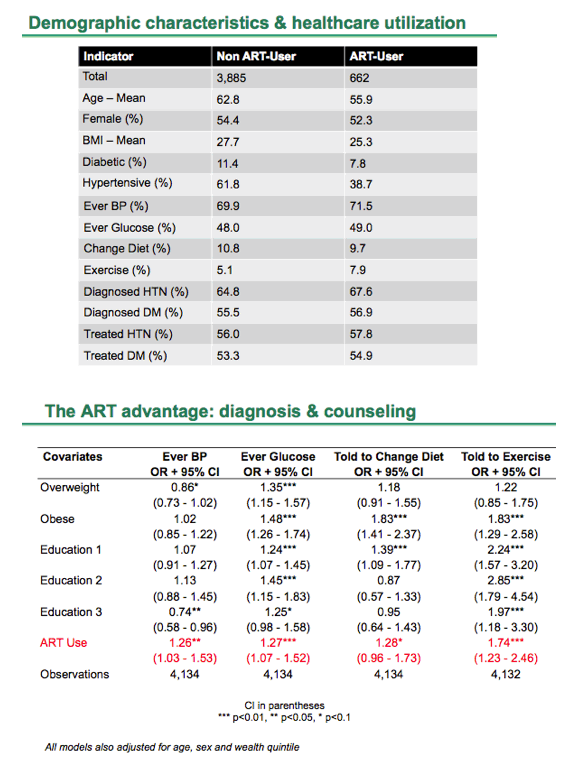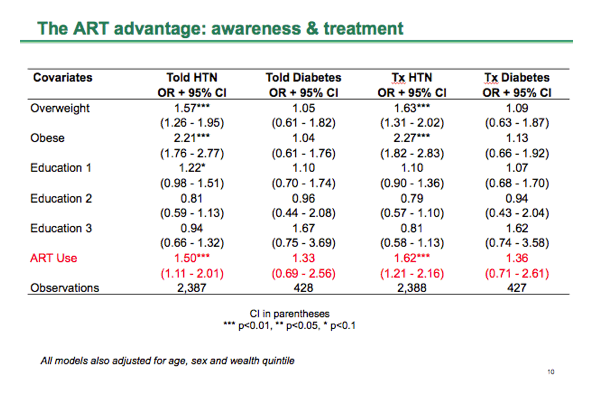 |
 |
 |
| |
The ART Advantage: healthcare utilization for diabetes and hypertension in rural South Africa
|
| |
| |
Reported by Jules Levin
IDWeek 2016 Oct 26-30 New Orleans
Jennifer Manne-Goehler, Livia Montana, F. Xavier Gomez-Olive, Julia Rohr, Guy Harling, Ryan Wagner, Alisha Wade, Chodziwadziwa Whiteson Kabudula, Stephen Tollman, Lisa F. Berkman, Till W. Bärnighausen, Thomas A. Gaziano
Jennifer Manne-Goehler, MD, DSc
Beth Israel Deaconess Medical Center, Harvard Medical School
Harvard T.H. Chan School of Public Health
October 2016


program abstract
Background: In the setting of expanded ART, there is increasing awareness that HIV-infected populations also face a dual burden of non-communicable diseases (NCDs). The aims of this study are to describe the differences in prevalence and access to care for diabetes (DM) and hypertension (HTN) across the HIV Care Cascade in Agincourt, South Africa and to assess the relationship between HIV infection, ART use and access to care for these major NCDs.
Methods: The Health and Aging in Africa: Longitudinal Studies of INDEPTH Communities (HAALSI) Study is a cohort of 5,059 adults aged 40 and over based in Agincourt. Enrollment took place from November 2014 through November 2015. This survey collected self-reported demographic characteristics and health service utilization. Height, weight, blood pressure (BP), glucose, HIV antibody, viral load and exposure to ART (FTC/3TC) were measured. We calculated differences in access to care for DM and HTN among HIV-positive participants who had never received ART (HIV/Never ART), who had a detectable viral load on ART (ART/VL Detected) and who were virally suppressed on ART (ART/Suppressed), compared to the HIV-negative population. Multivariate logistic regression analysis was used; all models were adjusted for age, sex, BMI, educational attainment and wealth quintile.
Results: DM prevalence in the HIV-positive groups ranged from 6.6 - 9.1% and HTN from 42.6 - 50.4%. Logistic regression models showed increased odds of ever receiving a blood pressure (OR: 1.80, 95% CI: 1.24 - 2.60) or glucose measurement (OR: 1.53, 95% CI: 1.12 - 2.09) among the ART/VL Detected group and increased odds of ever receiving a glucose measurement (OR: 1.47, 95% CI: 1.15 - 1.87) or preventive counseling regarding diet (OR: 1.70, 95% CI: 1.19 - 2.43) or exercise (OR: 2.04, 95% CI: 1.34 - 3.11) among the ART/Suppressed group, as compared to the HIV-negative population.
Conclusion: The burden of NCDs is substantial across the HIV Care Cascade in Agincourt. The HIV-positive population on ART also reported greater access to preventive care for NCDs. The positive spillover effects from ART utilization to preventive care for other chronic conditions could provide a powerful vehicle for broader population health improvements via increased programmatic integration.
Jennifer Manne-Goehler, MD, DSc, MSc1, Livia Montana, DSc, MA2, Xavier Gomez-Olive, MBBcH, MSc2, Julia Rohr, PhD2, Ryan Wagner, PhD3, Chodziwadziwa Kabudula, PhD4, Alisha Wade, MBBS, DPhil5, Kathleen Kahn, MBBCh, MPH, PhD4, Stephen Tollman, MBBCh, MPH, PhD4, Lisa Berkman, PhD, MS2, Till Barnighausen, MD, DSc, MSc6 and Thomas Gaziano, MD, MSc7, (1)Beth Israel Deaconess Medical Center, Boston, MA, (2)Harvard Center for Population & Development Studies, Cambridge, MA, (3)Medical Research Council/Wits Rural Public Health & Health Transitions Research Unit, Agincourt, South Africa, (4)School of Public Health, University of the Witwatersrand, Johannesburg, South Africa, (5)School of Public Health, University of the Witwatersrand, Johannesburg, MA, (6)Harvard T.H. Chan School of Public Health, Boston, MA, Boston, MA, (7)Department of Cardiovascular Medicine, Brigham & Women's Hospital, Boston, MA




|
| |
|
 |
 |
|
|